by Dr. Andrew Corbett, President of ICI Theological College Australia Understanding the Stem Cell Debate [Printable edition: Non-Theological | Including Theological Arguments]
 One of the most controversial debates raging at the moment is about the ethics of embryonic stem cell research. This debate has been curiously pitched as Science versus Religion. Sadly, this unfairly simplistic assessment of the debate has meant that any argument put forward by any Christian from the field of medical-science is instantly dismissed as merely “religious” arguments! Therefore what this argument is supposed to be about is often lost in the false idea that this is about religion versus science…
One of the most controversial debates raging at the moment is about the ethics of embryonic stem cell research. This debate has been curiously pitched as Science versus Religion. Sadly, this unfairly simplistic assessment of the debate has meant that any argument put forward by any Christian from the field of medical-science is instantly dismissed as merely “religious” arguments! Therefore what this argument is supposed to be about is often lost in the false idea that this is about religion versus science…
IS THIS A DEBATE BETWEEN RELIGION & SCIENCE?
 No. It’s a debate between ideologies (ideas that shape our opinions about the world around us). It’s not even really a debate between ‘progressive’ science and ‘conservative’ science (as we’ll see soon). While it’s not really a battle between science and religion, it is a very serious ethical dilemma that can possibly be presented as-
No. It’s a debate between ideologies (ideas that shape our opinions about the world around us). It’s not even really a debate between ‘progressive’ science and ‘conservative’ science (as we’ll see soon). While it’s not really a battle between science and religion, it is a very serious ethical dilemma that can possibly be presented as-
Which is more ethical?
* OPTION 1: To destroy unwanted human embryos and not use these doomed human ’tissue cells’ that could potentially save or dramatically improve the quality of a suffering person’s life?
Or…
* OPTION 2: To allow medical researchers to examine the potential health benefits latent within unwanted human embryos (left-over from IVF).
This is generally how the debate is expressed. Because those who are ‘religious’ generally regard human life as unique and a gift from God, they regard destroying the life of a human embryo as not only morally wrong but also ethically wrong. This contrasts with the approach by naturalists (atheists) who regard life as a chemical equation and the result of random chaotic evolutionary events.
WHAT ARE STEM CELLS?
 We all have stem cells. They are essentially those parts of the human body that are designed to make running repairs. When you cut your finger, stem cells get to work to repair your broken skin. But, not all parts of our bodies have these stem (building/repairing) cells. When you think of those parts of our bodies that can repair themselves: skin, bone, muscle, it’s because of stem cells. But what medical scientists suspect is that these stem cells perform an ‘additional’ function in human embryos It is believed that these embryonic stem cells have the capacity to become the building blocks of virtually any body part- including those parts that in an adult that don’t ordinarily have stem (building/repairing) cells. It is believed that it could therefore be possible to ‘clone’ specific body parts- like spinal cords or brain cells – from these embryonic stem cells and implant in them into an adult who has irreparable body damage. Anyone who has known someone suffering with Multiple Sclerosis (MS) or Parkinson’s Disease has despaired not only at the agony these people have to endure but at the thought that their incurable predicament can only deteriorate. It would be cynical to think that Medical Researchers are only motivated to discover a cure or better treatment for these incurable conditions for purely commercial reasons. There is an obvious desire to relieve human suffering and improve the quality of life for those who unfortunately lost the genetic lottery and suffer as a result. And this motivation reinforces the incredible and immeasurable value of an individual human life. Which makes the use of human embryos ironic.
We all have stem cells. They are essentially those parts of the human body that are designed to make running repairs. When you cut your finger, stem cells get to work to repair your broken skin. But, not all parts of our bodies have these stem (building/repairing) cells. When you think of those parts of our bodies that can repair themselves: skin, bone, muscle, it’s because of stem cells. But what medical scientists suspect is that these stem cells perform an ‘additional’ function in human embryos It is believed that these embryonic stem cells have the capacity to become the building blocks of virtually any body part- including those parts that in an adult that don’t ordinarily have stem (building/repairing) cells. It is believed that it could therefore be possible to ‘clone’ specific body parts- like spinal cords or brain cells – from these embryonic stem cells and implant in them into an adult who has irreparable body damage. Anyone who has known someone suffering with Multiple Sclerosis (MS) or Parkinson’s Disease has despaired not only at the agony these people have to endure but at the thought that their incurable predicament can only deteriorate. It would be cynical to think that Medical Researchers are only motivated to discover a cure or better treatment for these incurable conditions for purely commercial reasons. There is an obvious desire to relieve human suffering and improve the quality of life for those who unfortunately lost the genetic lottery and suffer as a result. And this motivation reinforces the incredible and immeasurable value of an individual human life. Which makes the use of human embryos ironic.
.
THE USE OF HUMAN EMBRYOS
When we talk about removing these invaluable and potentially life-saving stem cells from an embryo two questions arise. Firstly, can the embryo survive if some of its stem cells are removed (“harvested”)? Secondly, assuming that embryo death results from such stem cell harvesting in what way is this not to be regarded as the taking of a human life and therefore be considered murder?
As we ponder these two important questions, let’s visually consider what we mean by an embryo-
|
VISUAL
|
AGE & LENGTH |
DEVELOPMENTAL STAGE
|
|
|
Day 1 0.1mm |
“Zygote” |
 |
Day 2 0.2mm |
“Morula” |
 |
Day 13 0.2mm |
Placenta formation |
 |
Day 16 0.4mm |
Neurulation |
 |
Day 18 1.0mm |
Implantation |
|
|
Day 20
|
Somites appear |
|
|
Day 22 | Neural folds and heart folds develop |
|
|
Day 24 3.0mm |
Initial pharyngeal arches appear Heart is now beating Central nervous system is now functioning |
|
|
Day 28 5.0mm |
Upper limb buds appear Eyes and ears appear The brain and spinal cord are the largest tissues of the embryo at this stage |
|
|
Day 30 5.0mm |
Pharyngeal arches develop Face and neck begin to form Blood system now evident |
|
|
Day 35 7.0mm |
Esophagus forms |
|
|
Day 38 7.00mm |
Cerebral hemisphere forms Eyes begin to form |
|
|
Day 40 11.0mm |
The Hindbrain formed (regulates the heart, breathing, and muscle movement) Digits (fingers and toes) appear |
|
|
Day 43 13.0mm |
Four chambered heart now formed Facial muscles now developing |
 |
Day 46 14.0mm |
Eyes pigmented Nipples appear Hand plates formed Kidneys now producing urine |
 |
Day 50 18.0mm |
First detectable brain waves The brain is now functioning Ears now functioning to provide a sense of balance |
 |
Day 52 20.0mm |
Spontaneous movements Nose formed, nasal openings evident Genitals formed (testes or ovaries) Toes formed |
 |
Day 53 22.0mm |
Intestines recede from the umbilical cord into the embryo Eyes now developed |
 |
Day 55 24.0mm |
Cartilage forming into bones Brain can now move muscles |
 |
Day 58 26.0mm |
Head is erect and rounded. External ears are completely developed. The eyes are closed, but the retina of the eye is fully pigmented. The eyelids begin to unite and are only half closed. Taste buds begin to form on the surface of the tongue. The primary teeth are at cap stage. Bones of the palate begin to fuse. |
|
End of the embryo stage. |
||

.
IS AN EMBRYO HUMAN?
 On November 30th 2006 a member of the Tasmanian Upper House, who is suffering from Parkinson’s Disease, lent his support to the quest to legalise Embryonic Stem Cell research. His argument was that the killing of an embryo was reasonable and morally justifiable since a human embryo “is not a human being.” Therefore, while he stated his opposition to murder and even seriously questioned the morality of abortion-on-demand, he regarded the harvesting of stem cells from human embryos as perfectly legitimate – since according to his reasoning, a human embryo is not human.
On November 30th 2006 a member of the Tasmanian Upper House, who is suffering from Parkinson’s Disease, lent his support to the quest to legalise Embryonic Stem Cell research. His argument was that the killing of an embryo was reasonable and morally justifiable since a human embryo “is not a human being.” Therefore, while he stated his opposition to murder and even seriously questioned the morality of abortion-on-demand, he regarded the harvesting of stem cells from human embryos as perfectly legitimate – since according to his reasoning, a human embryo is not human.
The claim that a human embryo is not a human being is reasoned in several ways. To be a human being, it is claimed that you must-
-
-
Think and reason independently.
-
Exist independently.
-
Have all the necessary internal organs to digest, process, and convert nutrients.
-

 But this is an unreasonable criteria. Some children are actually born with the majority of their brain missing (anencephalic), yet no-one would claim that they are not “human”. Other children are born with hydrocephalus which is a condition which severely compresses the brain due to a major build up of fluid in the head.
But this is an unreasonable criteria. Some children are actually born with the majority of their brain missing (anencephalic), yet no-one would claim that they are not “human”. Other children are born with hydrocephalus which is a condition which severely compresses the brain due to a major build up of fluid in the head.
The argument that an embryo is not yet human because it could not independently exist apart from its host (its mother) is quite unreasonable because it could be argued that any newborn child is similarly non-independent and totally reliant upon others for its survival. This can also be argued for the terminally ill and disabled who become dependent upon others for their survival. It would be unreasonable to claim that a new-born baby or an invalid is not human.
 Thirdly, some people are born without all the necessary organs that others are blessed with. Some children are even born with these organs in the wrong places! Yet again it would be absurd to claim that these people were not human.
Thirdly, some people are born without all the necessary organs that others are blessed with. Some children are even born with these organs in the wrong places! Yet again it would be absurd to claim that these people were not human.
The Washington Post recently reported the story of a baby born with its heart outside of its body!
Other people are unfortunate enough to either be born with or develop conditions that deprive them of genitals, renal function, or taste. Yet with artificial assistance these people function relatively well.
Curiously, the ABC interviewer who questioned the Tasmanian MLC asked him whether his incurable disease had affected his judgment in the matter of Embryonic Stem Cell research. He said that it might have but that it was important to leave religion, ethics, and morality out of this debate and concentrate “only the science”. I would have liked Tim Cox to have asked him “Why?” but I suspect the interviewer’s own confessed atheism hindered him from seeing why this might have been a problem. The MLC offered no reasons as to why ethics and morality should be left out of this debate, and I find it amazing that so many people simply accept this criteria for life and death decision-making.
 The interviewer asked the MLC about Australian Senator, Guy Barnett, and his vigorous campaign to thwart the Therapeutic Cloning Bill (Embryonic Stem Cell Research). While he expressed genuine admiration for Senator Barnett, he said that his arguments were not valid and would hinder those who could benefit from the fruit of this research- like those suffering from diabetes. Ironically, Senator Barnett (perhaps unknown to the MLC) suffers from this incurable disease. In other words, Guy Barnett is amply qualified to speak about these issues because they may directly affect him. The MLC criticised Senator Barnett’s argument that Embryonic Stem Cell research held out false hope to sufferers of incurable diseases and conditions. I agree with the MLC that this argument is a very weak one against approving the Therapeutic Cloning Bill (because medical-scientists won’t know what hope there is until they begin experimenting). This is despite the fact that Senator Barnett is pointing out the present reality of this type of research that the only advances that have come stem cell experiments have been from adult stem cell harvesting (where no embryos are used). But ultimately this is not the point and perhaps Senator Barnett should focus on the morality of cloning human embryos rather than the scientific benefits or otherwise.
The interviewer asked the MLC about Australian Senator, Guy Barnett, and his vigorous campaign to thwart the Therapeutic Cloning Bill (Embryonic Stem Cell Research). While he expressed genuine admiration for Senator Barnett, he said that his arguments were not valid and would hinder those who could benefit from the fruit of this research- like those suffering from diabetes. Ironically, Senator Barnett (perhaps unknown to the MLC) suffers from this incurable disease. In other words, Guy Barnett is amply qualified to speak about these issues because they may directly affect him. The MLC criticised Senator Barnett’s argument that Embryonic Stem Cell research held out false hope to sufferers of incurable diseases and conditions. I agree with the MLC that this argument is a very weak one against approving the Therapeutic Cloning Bill (because medical-scientists won’t know what hope there is until they begin experimenting). This is despite the fact that Senator Barnett is pointing out the present reality of this type of research that the only advances that have come stem cell experiments have been from adult stem cell harvesting (where no embryos are used). But ultimately this is not the point and perhaps Senator Barnett should focus on the morality of cloning human embryos rather than the scientific benefits or otherwise.
 WHY EMBRYONIC STEM CELL RESEARCH (INCORPORATING HUMAN CLONING) IS MORALLY INDEFENSIBLE
WHY EMBRYONIC STEM CELL RESEARCH (INCORPORATING HUMAN CLONING) IS MORALLY INDEFENSIBLE
Despite Terry Martin MLC (Tasmania) demanding that “ethics and morality be left out of the argument” (which is tacit admission that what is proposed is known to be unethical and immoral) this is fundamentally a moral and ethical issue – not merely a scientific one. Medical Science may well discover how to use embryonic stem cells to improve the quality of life of someone order accutane online shipping suffering, but at what human cost? What if scientists discovered that all 21 year olds develop a revolutionary secretion from their pancreas that could save the life of millions if the pancreas, kidneys and liver were permanently removed from the 21 year old? This is of course an absurd scenario but I exaggerate to highlight the principle involved behind Embryonic Stem Cell research. That is, it is immoral to take a life to possibly preserve a life. Therefore, this is not a debate about the potential health benefits to be derived from cloning human embryos for the harvesting of their stem cells.
Nevertheless, this is still the main argument used by advocates of embryonic stem cell research. This is despite all of the therapeutic advances from stem cell research being derived from adult stem cells. This is countered by the argument- “We haven’t found any therapeutic benefits yet – in the same way that prior to 1969 we hadn’t landed a man on the moon! Allow us to continue to our research and eventually we will find benefits!” And they probably might eventually be able to – but this is an extremely inappropriate analogy. The ethical dilemmas associated with landing men on the moon involved the potential to injure or lose human life. This is contrasted with the ethical and moral dilemma associated with human embryonic stem cell research where loss of human life is necessary. It would be more appropriate to make such an analogy a 1:1 ethical dilemma by having any such rocket ship powered by the same source of therapeutic benefit from embryonic stem cells: human embryos – to make the analogy more apt. Further, the argument that researchers could one day derive benefit from embryonic stem cell research may well be proven true (even though early indications by researchers in other parts of the world have proven extremely disappointing and even disturbing), but this doesn’t get around the major contradiction that human life is created and destroyed or taken and destroyed to potentially benefit another human. This is utilitarianism at its ugliest.
Secondly, I return to the two questions I raised near the start of this article: Is a human embryo human? The arguments of “independence” given for defining humanity have been explored and found deficient. How then can we better and unequivocally define “humanness”? I believe the answer is simple: DNA. If an organism has human DNA exclusively, it should be regarded as human. A human embryo has all the human DNA it will ever have. We know that “humanness” is not simply a chemical or biological equation, it is a matter of information. To claim that a human embryo is “just a collection of cells” is an emotional statement, not a scientific one! This is still the case even if medical researchers are “just” taking an unfertilised human egg and triggering its growth with foreign human cells so that potential embryonic stem cells are “cloned”! Examine the table above and you will see that an embryo rapidly develops its commonly accepted “human” functions extremely early. A beating heart, an active brain, a renal system, and a neurological system are all in place and functioning during the embryonic stage of human development. To claim that an embryo is not yet human simply defies logic and the scientific data! Medical science researchers don’t dispute this. They generally appeal to the “so what?” argument, and argue that the benefits to be gained from experimentation on these “unwanted” and “cloned” embryos far outweighs any moral issues involved. I strongly disagree.
Thirdly, can an embryo survive the removal of its stem cells? No. Since it can be reasonably shown that a human embryo is a human, it deserves the dignity that is becoming to any human.
NEW AUSTRALIAN LAW
What has now been approved by the Federal Parliament of Australia is that a human embryo can be created through cloning. This is done by harvesting ovum from a female and inserting the necessary DNA of a stem cell recipient into it so that its stem cells can be harvested. This procedure creates life to destroy it to potentially save another. This new Australian legislation will allow for the ovum of aborted unborn baby girls to be harvested to create human embryos for the purpose of harvesting stem cells. This means that an aborted unborn baby girl could in fact become a mother to an aborted human being!
.
HOPE
Adult stem cells, and stem cells from cord blood are already providing promising results in this arena of research. But like many medical breakthroughs, cures often come from unlikely places (like penicillin from moldy bread!). Yet it seems that all hope is being put in the morally indefensible procedure of cloning a human life then killing it to harvest its stem cells. It is bewilderingly sad that so many Australian politicians have been lulled into dismissing moral and ethical arguments against this practice and accepted that this is only about medical outcomes.
This is not a battle against science and religion! It is a scientific battle to discover effective cures that should be conducted ethically in a way that upholds the dignity of all who bear the image of our creator inscribed in their DNA.
Dr. Andrew Corbett, 7th December 2006
Postscript-
‘Lines that Divide’
The Great Stem Cell Debate
June 30, 2009
Scientists at Children’s Hospital in Oakland, California, are discovering a potential cure for leukaemia and sickle-cell disease. How? By using blood stem cells from the placentas of women who have had Caesarian deliveries.
But researchers at the hospital are frustrated. State agencies have made multi-million-dollar grants available for embryo-destructive research, but money is scarce for its ethically sound counterpart, adult stem cell research.
In the Contra Costa Times, lead Children’s Hospital researcher Frans Kuypers says, “No one has been cured by an embryonic stem cell. We are able to cure folks with [adult] stem cells.”
So why isn’t adult stem cell research receiving more funding? Josephine Quintavalle, director of Comment on Reproductive Ethics, says “What you get from [the adult stem cell] approach is a patient-specific cure. There’s no middleman . . . and there’s no drug company that’s going to get rich as a result of it.”
But, she explains, a lot of the pressure for stem-cell research is to find products that they can sell, as opposed to a treatment they can do to cure you.
Quintavalle is just one of many experts from both sides of the debate interviewed in the new documentary, Lines that Divide, produced by the Center for Bioethics and Culture.
In the documentary you’ll hear first-hand testimonies from people whose lives have been saved through adult stem cell research. Like Barry Goudy, who suffered with multiple sclerosis. Since undergoing adult stem cell replacement therapy, he’s been free from MS for five years.
“They reboot your immune system,” he explains. “I live a normal life. I coach hockey, I play racquetball, I golf.” Without the adult stem cell transplant, Goudy would probably be in a wheelchair.
Twenty-two-year-old Corrina Archuleta also shares her dramatic recovery from a flesh-eating auto-immune disorder. Her family was making her funeral arrangements before adult stem cell therapy saved her life.
The film also covers why even traditionally pro-choice advocates are speaking out against embryo-destructive stem cell research. In order to extract enough eggs for embryonic stem cell research, a woman’s ovaries are hyper-stimulated so that she will produce a dozen or more eggs at a time.
But doctors know that ovarian hyper-stimulation syndrome and the drugs themselves have caused blood clotting, stroke, and even death. The former chief medical officer of the FDA warms that potential egg donors “need to be aware that this is not a procedure that is without risk.” Even the risk of death.
That’s not what you are seeing in the media. What you do see, however, are celebrities and politicians gushing over the potential for embryo-destructive stem cell research. Even while lives are being saved today by adult stem cell therapy.
We need to be informed in order to help shape the public debate—and encourage our leaders to fund proven, morally unproblematic adult stem cell research.
That’s why I urge you to get a hold of the film Lines that Divide. Visit BreakPoint.org, and we’ll tell you how.
Chuck Colson
https://www.findingtruthmatters.org
This article may be copied and distributed if due credit is given to the author, the article is not altered, and the website- https://www.findingtruthmatters.org – is hyperlinked or referenced.
-
Sale!
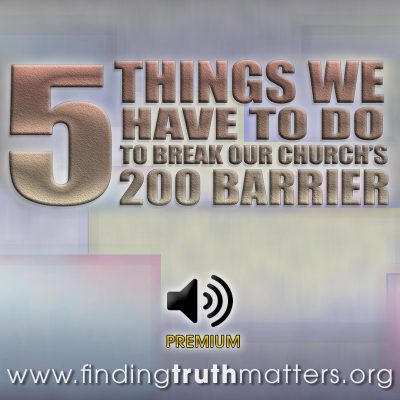
5 Things We Need To Do To Break Our Church’s 200 Barrier, Premium Audio
Original price was: $1.75.$0.95Current price is: $0.95. -
Sale!
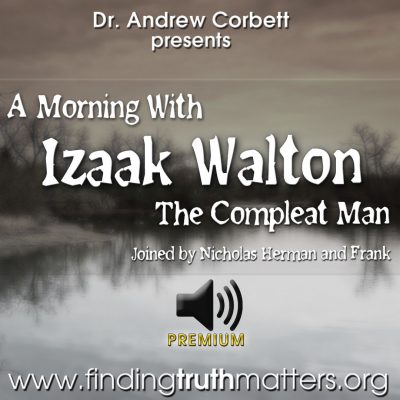
A Morning With Izaak Walton – The Compleat Man, Premium Audio
Original price was: $1.75.$1.25Current price is: $1.25. -
Sale!
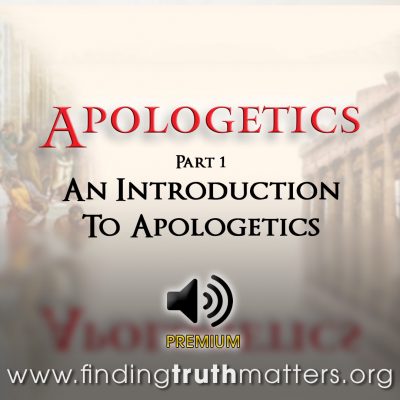
Apologetics Part 1 – Introduction To Apologetics, Premium Audio
Original price was: $1.75.$0.95Current price is: $0.95. -
Sale!
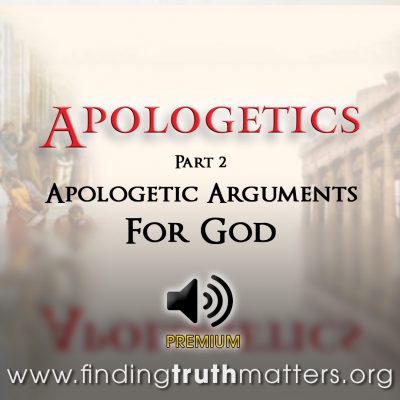
Apologetics Part 2 – The Apologetic Arguments For God, Premium Audio
Original price was: $1.75.$0.95Current price is: $0.95.
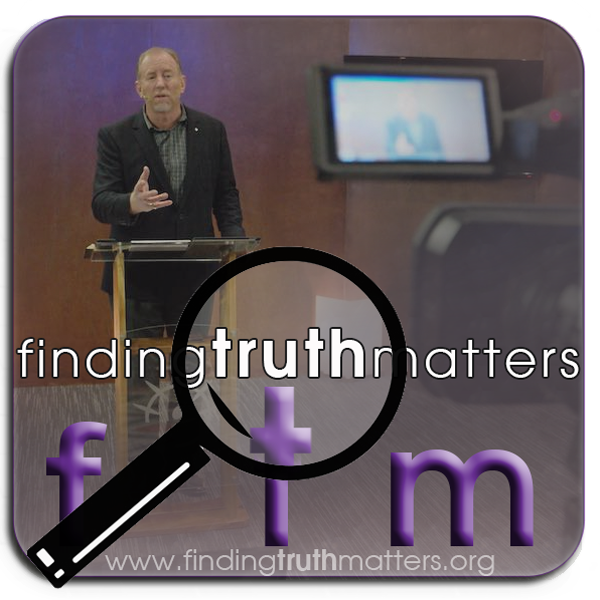



















































0 Comments